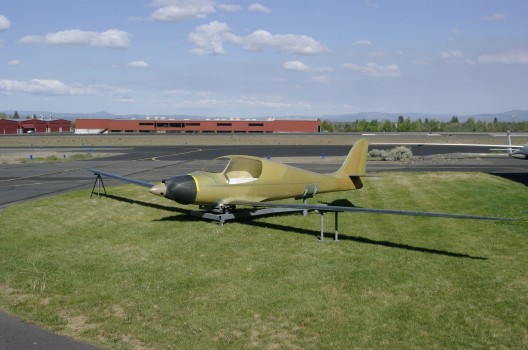The GosHawk was conceived as an electric aircraft and technology has FINALLY caught up with it, according to designer Greg Cole. Its sailplane-like proportions allow it to fly with the smallest of power inputs, and real soaring is possible with the electric propulsion system completely shut down, Greg says. This author finds it suits its namesake with a sporty nature and a natural beauty.

Flowing lines of GosHawk show strong design heritage from Windward Performance, even in unfinished form. Photo courtesy of Greg Cole
The GosHawk is also planned in two additional versions with internal combustion engines. The HKS 700E engine is a fuel-efficient two-cylinder unit seemingly ideal for motorgliders or touring gliders. His airplane with this engine’s 56 horsepower available can attain a 100 mile per hour cruise at a fuel consumption of 100 miles per gallon, or 200 passenger miles per gallon (pmpg). Greg also plans on using the ubiquitous Rotax in 85 BHP form.
Its empty weight of 510 pounds with the HKS powerplant shows the skills Greg’s company, Windward Performance achieves with pre-impregnated carbon fiber layups. Greg has crafted a 50.8 foot wingspan aircraft that weighs about 220 pounds less than a 65-hp Piper J-3 and still retains sailplane load limits (+5.3g / -3.0g). Part of this is due to the use of a modified version of the DuckHawk wing, designed for dynamic soaring in this single-seat high-performance sailplane. In two-seat service with a motor and batteries, it’s still stronger than a utility-class General Aviation craft.
GosHawk’s high never-exceed velocities (depending on model) demonstrate its excellent strength and verify its high-speed capabilities. Its 38:1 lift-to-drag ratio at 46 knots (52.9 mph) and 130 feet per minute minimum sink rate at 46 knots (52.9 mph) highlight its aerodynamic cleanness.
Greg says, “We plan to retain the V, SV, and VNX designation started with the DuckHawk. V would be the very lightest (perhaps the most interesting) and with lower speed limits (120 KEAS* Vne, or l38 mph). The SV would have a 200 KEAS Vne and higher gross weight limits. The VNX would push the Vne up to 225 KEAS.”
Projected rate of climb at 700 pounds is 1,200 feet per minute at 85 knots (97.75 mph), a nice cruising climb while still clearing obstacles. On the other end, Goshawk’s stall speed of 42 knots (48.3 mph) enables short-field landings, especially with its low total mass.
Its side-by-side configuration makes it a good training platform, and its soaring capabilities will allow thermal, slope, and wave exploration. The motor can be restarted at altitude for self retrieval if required.
Greg’s electric propulsion system will enable the same performance and an hour’s endurance using currently-available batteries. The airplane is nearing completion at Windward Performance’s workshops in Bend, Oregon, waiting installation of its environmentally-friendly motor system.
Greg plans to offer three battery capacities in increments of 5 kilowatt-hours (kW-Hrs). Endurance with 5kW-Hr is 30 minutes, making GosHawk more of a self launching sailplane. Greg explains, “The full battery capacity, or load if we can say that, will dig into performance and add 180 pounds (90 pounds per 5 kW-Hr) to the weight but give it an almost usable range. Gross weights of the SV and Vnx versions will be 1,150 pounds. It is likely that the weight of the 5kW-Hr capacity version will equal that of the HKS-powered aircraft.”
Weights and performance numbers are based on currently available batteries, which are projected to improve with time. We look forward to seeing the new motor installation and Goshawk’s first flights.
*KEAS: knots equivalent air speed – calibrated airspeed corrected for atmospheric properties at the particular altitude.
